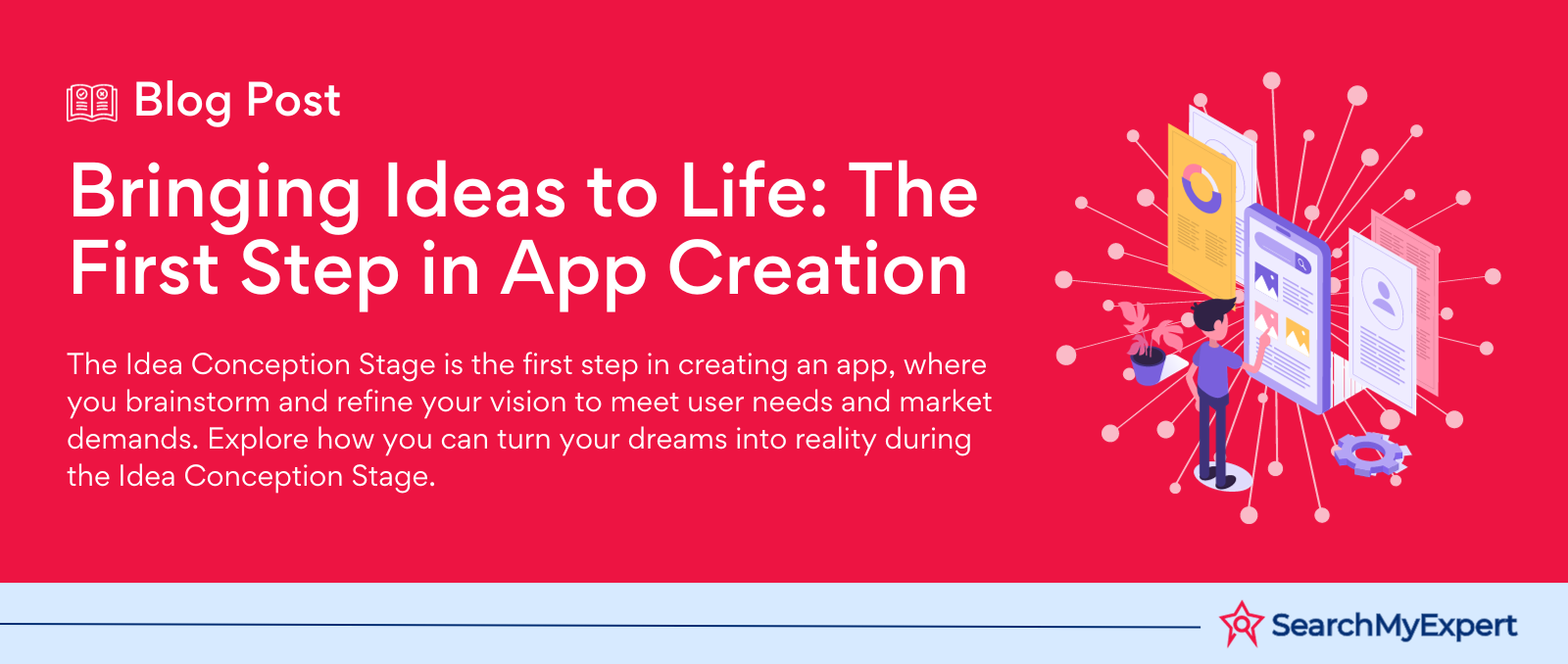Branding Evolution: From Digital Innovation to Sustainability

The Evolution of Branding
Decoding the Essence of Branding and Its Evolutionary Journey
Branding: a concept that transcends mere visual elements to become the heartbeat of a business's identity. At its core, branding is the art and science of creating a distinct and memorable identity for a product, service, or company. It's about crafting a story, forging an emotional connection with consumers, and differentiating from competitors. The primary purpose of branding is to establish recognition, evoke trust, and foster loyalty among the target audience.
Branding isn't a static discipline; it's dynamic, evolving with societal shifts, technological advancements, and consumer preferences. This evolutionary journey of branding can be segmented into key stages, each reflecting a unique era in marketing and consumer behavior.
Stages of Branding Evolution: A Snapshot
- Primitive Branding: The rudimentary form, where branding was synonymous with marking livestock or products with symbols for ownership and quality.
- Industrial Revolution and Brand Identity: With mass production, the focus shifted to creating distinct brand identities for products, using logos, packaging, and advertising.
- The Rise of Mass Media: This era leveraged print, radio, and TV to reach broader audiences, leading to the birth of mass marketing strategies.
- The Consumer-Centric Shift: Brands began to focus more on consumer needs and experiences, valuing customer feedback and customization.
- Digital and Interactive Branding: The internet age revolutionized branding, introducing interactivity, personalization, and digital communities.
- Sustainability and Ethical Branding: Growing environmental and social consciousness among consumers has led brands to adopt sustainable and ethical practices.
- The Future of Branding: Emerging technologies like AI, AR/VR, and evolving trends like micro-influencer marketing are shaping the future branding landscape.
Early Branding: From Marks to Identity
The journey of branding begins in an era far removed from our digital world. This primitive phase of branding was less about psychological appeal and more about practical identification.
Cattle Brands and Maker's Marks: The Origins
The earliest forms of branding were quite literal. Cattle branding, a practice dating back to ancient Egypt and Rome, involved marking livestock with hot irons to signify ownership. These symbols, unique to each owner, were the first inklings of brand identity in the most basic sense.
Similarly, maker's marks played a pivotal role in the pre-industrial world. Artisans, especially in metalworking and pottery, marked their creations with specific symbols. These marks were a guarantee of origin and a testament to quality, often holding legal significance.
The Industrial Revolution: A Turning Point for Branding
The Industrial Revolution marked a dramatic shift in the concept of branding. As products began to be mass-produced, the personal connection between maker and buyer diminished. This era's rapid urbanization and expanding markets created an urgent need for brand differentiation.
Products that were once unique and handcrafted were now identical and plentiful. In this environment, distinguishing one's product from another became crucial. It wasn't just about indicating origin anymore; it was about capturing customer attention and loyalty.
The Birth of Brand Identity
The response to this challenge was the early development of brand identity. This concept extended beyond mere marks and symbols. It encompassed the entire persona of a product - from its name and logo to its packaging and advertising style.
During this era, some of the world's most enduring brands were born. Companies began to understand the power of strong brand identity in creating customer loyalty and differentiating their products in a crowded marketplace. Icons like Coca-Cola and Ford emerged, setting the foundation for modern branding.
These early developments laid the groundwork for the sophisticated branding strategies we see today. They marked the beginning of branding's evolution from simple marks of ownership to complex identities that resonate emotionally with consumers.
The Rise of Mass Marketing: Building Brand Recognition
The evolution of branding entered a new era with the advent of mass media. This period, marked by significant developments in print and television, fundamentally altered the landscape of branding.
Mass Media's Impact on Branding
The proliferation of mass media - newspapers, magazines, radio, and later, television - created unprecedented opportunities for brands. For the first time, businesses could reach a vast audience, transcending geographical and social boundaries.
- Print Media: Newspapers and magazines offered a broad canvas for advertising. They allowed brands to present elaborate narratives and visual appeals, connecting with audiences on a larger scale.
- Television: Perhaps the most transformative, television brought branding into the living room. It combined visual and auditory elements, making brand messages more memorable and impactful. TV ads became a cultural phenomenon, shaping consumer perceptions and desires.
The Emergence and Influence of Mass Marketing
In this new media environment, mass marketing strategies emerged. This approach was about appealing to the widest possible audience. Brands shifted from simply providing information about their products to crafting stories and emotional appeals.
- Standardization vs. Differentiation: Mass marketing involves a delicate balance. While products were standardized in production, their branding had to be differentiated to stand out in the crowded marketplace.
- Psychological Appeal: Brands started focusing on the psychological aspects, tapping into desires, aspirations, and self-image. This marked a shift from product-centric to consumer-centric branding.
Brand Mascots and Logos: Symbols of Recognition
A key development in this era was the rise of brand mascots and logos. These symbols served as powerful tools for building brand recognition and loyalty.
- Brand Mascots: Characters like Tony the Tiger (Kellogg's) and Ronald McDonald became more than just symbols; they were part of the brand's story, imbuing it with personality and relatability.
- Logos: Logos evolved to become the visual shorthand for the brand. The Nike Swoosh or the Apple logo, for example, became iconic, instantly recognizable, and laden with meaning.
These elements of brand identity became crucial in capturing consumer attention in a rapidly expanding and increasingly competitive market. They were not just marketing tools; they became integral to the brand's identity, embodying its values, ethos, and promise.
The Consumer Revolution: Shifting Focus to Brand Values
The late 20th century marked a pivotal shift in the branding world, often referred to as the Consumer Revolution. This period was characterized by a significant change in consumer awareness and expectations, leading to a transformation in branding strategies.
Changing Consumer Awareness and Expectations
During this time, consumers became more informed and empowered. Several factors contributed to this change:
- Increased Access to Information: With the advent of the internet and global media, consumers had more access to information about products, companies, and their practices.
- Rise of Consumer Advocacy: There was a surge in consumer rights movements, emphasizing informed choices and quality standards.
- Diverse Choices: The market saw an influx of product options, giving consumers the power to be more selective.
This heightened awareness shifted the power dynamics from brands to consumers. Consumers began demanding more than just quality products; they sought brands that aligned with their values and lifestyles.
Shift from Product-Centric to Consumer-Centric Branding
This era witnessed a fundamental shift in branding strategies:
- Understanding Consumer Needs: Brands started focusing on understanding and meeting the specific needs and desires of their target audience.
- Engagement and Experience: The emphasis moved toward creating engaging brand experiences and building long-term relationships with consumers.
- Customization and Personalization: Personalized marketing became a key strategy, as brands strove to cater to individual consumer preferences.
Introduction of Brand Values
An integral component of this shift was the focus on brand values.
- Building Trust through Values: Consumers began to look for brands that not only provided quality products but also resonated with their personal beliefs and ethics. Brand values became crucial in building trust and loyalty.
- Ethical and Social Responsibility: Brands increasingly adopted ethical practices and social responsibility as part of their core values. This included sustainable practices, fair trade, and community involvement.
- Authenticity and Transparency: Authenticity in communication and transparency in business practices became vital. Brands that were seen as genuine and honest in their dealings gained more consumer trust.
The Digital Age: Interactive Branding and Personalization
The dawn of the digital age marked a revolutionary change in the world of branding. The advent of the internet and digital technologies transformed the landscape, introducing new dimensions to brand engagement and communication.
Impact of the Internet and Digital Technologies on Branding
- Global Reach and Accessibility: The internet eliminated geographical barriers, allowing brands to reach a global audience with ease.
- Data-Driven Insights: Digital technologies provide brands with unprecedented access to consumer data, enabling more targeted and effective marketing strategies.
- Real-Time Engagement: Brands could now interact with consumers in real time, responding to feedback, queries, and trends instantaneously.
Rise of Interactive and Personalized Branding Experiences
In the digital era, interactive and personalized experiences have become central to branding strategies:
- Personalization at Scale: Brands leveraged data analytics to offer personalized experiences to consumers, tailoring messages and offers to individual preferences and behaviors.
- Interactive Marketing: Interactive campaigns, where consumers could engage and participate with the brand, became popular. This ranged from online contests to user-generated content initiatives.
- Evolving Consumer Expectations: As consumers experienced heightened personalization, their expectations from brands evolved. They sought experiences that were not just personalized but also seamless across various digital platforms.
Importance of Social Media and Online Communities in Brand Building
Social media and online communities emerged as powerful tools in brand building:
- Brand-Consumer Dialogue: Social media platforms enabled a two-way dialogue between brands and consumers, fostering a sense of community and loyalty.
- User-Generated Content: Brands capitalized on user-generated content to build authenticity and trust. Consumers became not just passive recipients of brand messages but active participants.
- Influencer Partnerships: The rise of influencers on social media introduced a new dimension to branding. Brands collaborated with influencers to tap into their loyal followings and enhance brand credibility.
- Real-Time Feedback and Adaptation: Social media allows brands to gather real-time feedback, enabling them to adapt and respond quickly to consumer needs and market trends.
The digital age revolutionized branding, shifting the focus from traditional one-way communication to interactive and personalized experiences. It empowered brands to engage with consumers in more meaningful ways, building deeper connections and a more nuanced understanding of their needs and preferences. This era set the stage for an even more connected and technologically advanced future in branding.
The Era of Sustainability: Brands and Social Responsibility
The turn of the 21st century saw a significant shift in consumer consciousness toward environmental and social issues, profoundly impacting branding strategies.
Growing Awareness of Environmental and Social Issues
- Increased Environmental Consciousness: With the looming threats of climate change and environmental degradation, consumers have become more environmentally conscious. They now seek brands that demonstrate a commitment to sustainability.
- Social Responsibility: There is a growing expectation for brands to be socially responsible, not just in their business practices but also in their contributions to societal issues.
- Educated and Informed Consumers: Thanks to the accessibility of information, consumers are more informed about the global impact of their consumption choices and expect transparency from brands.
Emergence of Sustainable and Ethical Branding Practices
- Sustainability as a Brand Value: Brands have begun to incorporate sustainability into their core values. This includes using eco-friendly materials, reducing carbon footprints, and engaging in fair trade practices.
- Ethical Marketing: Ethical marketing, which emphasizes honesty and social responsibility, has become crucial. Brands are focusing on ethical aspects of their supply chain, from sourcing to labor practices.
- Green Branding Initiatives: Many brands have launched initiatives focused on environmental conservation, such as recycling programs and supporting green technologies.
Challenges and Opportunities in Aligning Brand Values with Social Responsibility
- Authenticity vs. Greenwashing: One of the biggest challenges is avoiding the trap of greenwashing - making misleading claims about the environmental benefits of a product or brand.
- Balancing Profit and Purpose: Brands face the challenge of balancing business goals with social and environmental responsibilities.
- Opportunity for Innovation: This era offers opportunities for innovation in sustainable practices, potentially opening up new markets and consumer segments.
Future of Branding: Continuous Evolution and Emerging Trends
The future of branding is poised to be shaped by technological advancements and evolving consumer behaviors.
Impact of Emerging Technologies
- Artificial Intelligence (AI): AI's potential impact on branding is significant. From personalized marketing to predictive analytics, AI can offer deeper insights into consumer behavior and automate complex marketing tasks.
- Augmented Reality (VR) and Virtual Reality (VR): AR and VR can revolutionize the brand experience, offering immersive and interactive experiences that were previously impossible.
Emerging Trends in Branding
- Micro-Influencer Marketing: The rise of micro-influencers, who have smaller but highly engaged followings, is changing the influencer marketing landscape. They offer authenticity and niche appeal.
- Personalized Content Creation: Personalization continues to be a dominant trend. Brands are increasingly using data to create highly personalized content, catering to individual consumer preferences.
Speculations on Future Brand Evolution
- Continued Focus on Sustainability: Sustainability is likely to remain a central theme in branding as environmental concerns continue to grow.
- Blending Physical and Digital Experiences: The future may see a blending of physical and digital brand experiences, creating a more holistic brand experience.
- Ethical and Value-Based Branding: As consumers become more values-driven, brands will likely continue to align themselves with social and ethical causes to remain relevant.
Conclusion:
The journey of branding from its primitive beginnings to its current state is a testament to its dynamic nature and adaptability. The evolution of branding reflects broader societal, technological, and economic changes. Each stage, from the earliest forms of cattle brands to the sophisticated digital and sustainable practices of today, marks a significant shift in how businesses connect with their consumers.
The future of branding, with its potential integration of emerging technologies like AI and AR/VR, and trends like micro-influencer marketing and personalized content, promises even more exciting developments. As we move forward, the importance of aligning brand values with consumer expectations, particularly around sustainability and social responsibility, will be paramount.
Connect, engage, and inspire with elite Branding Agencies.
share this page if you liked it 😊
Other Related Blogs

Mastering Docker for App Development: A Comprehensive Guide to Benefits, Use-Cases, and Alternatives
STAY UP TO DATE
GET PATH'S LATEST
Receive bi-weekly updates from the SME, and get a heads up on upcoming events.
Contact Us











